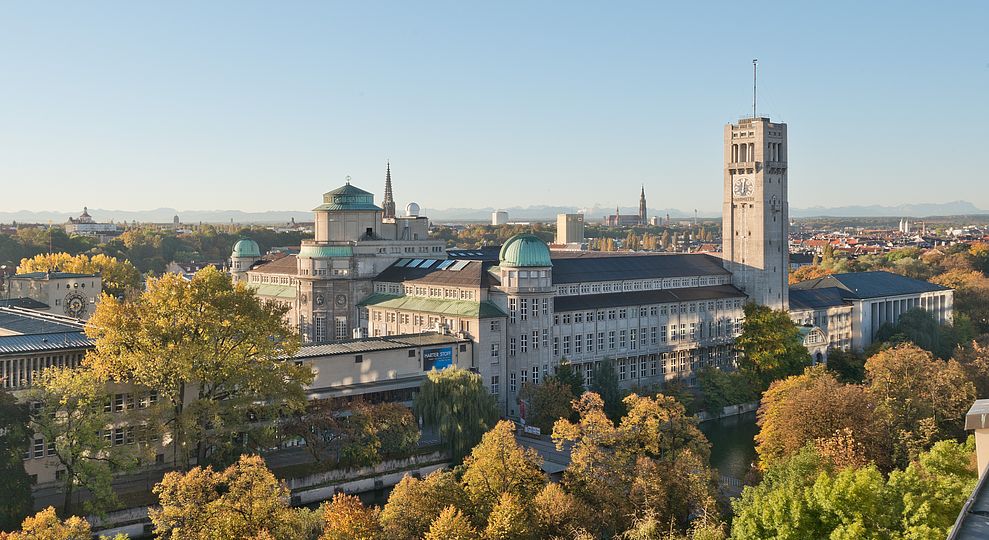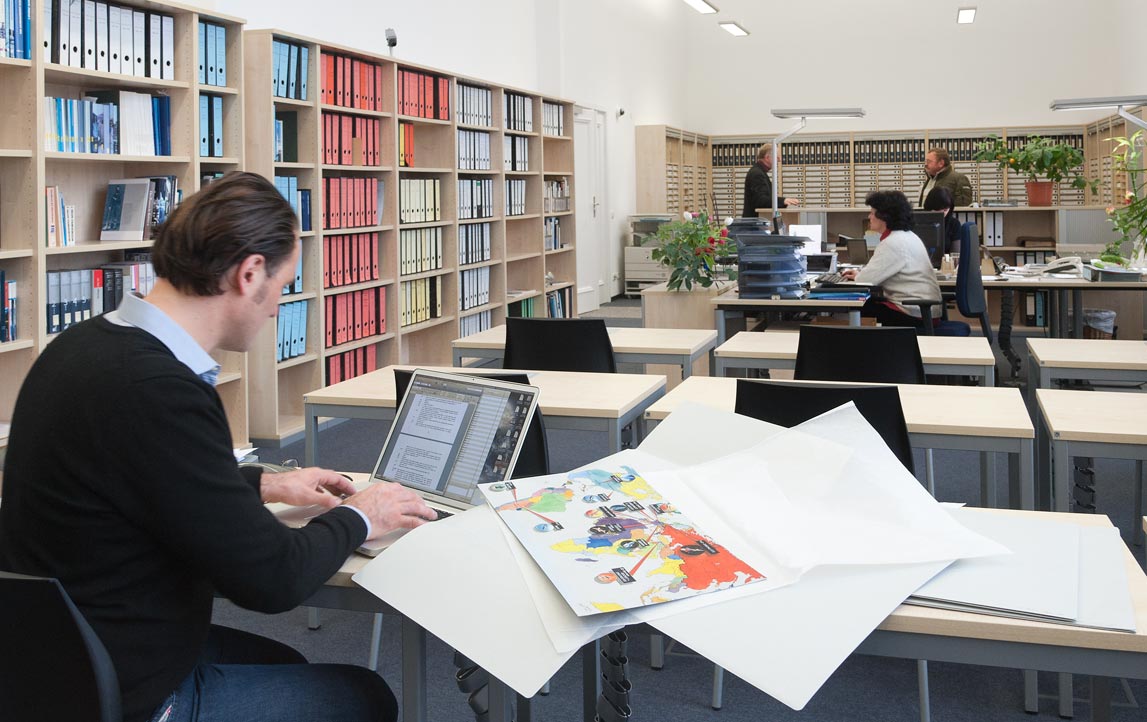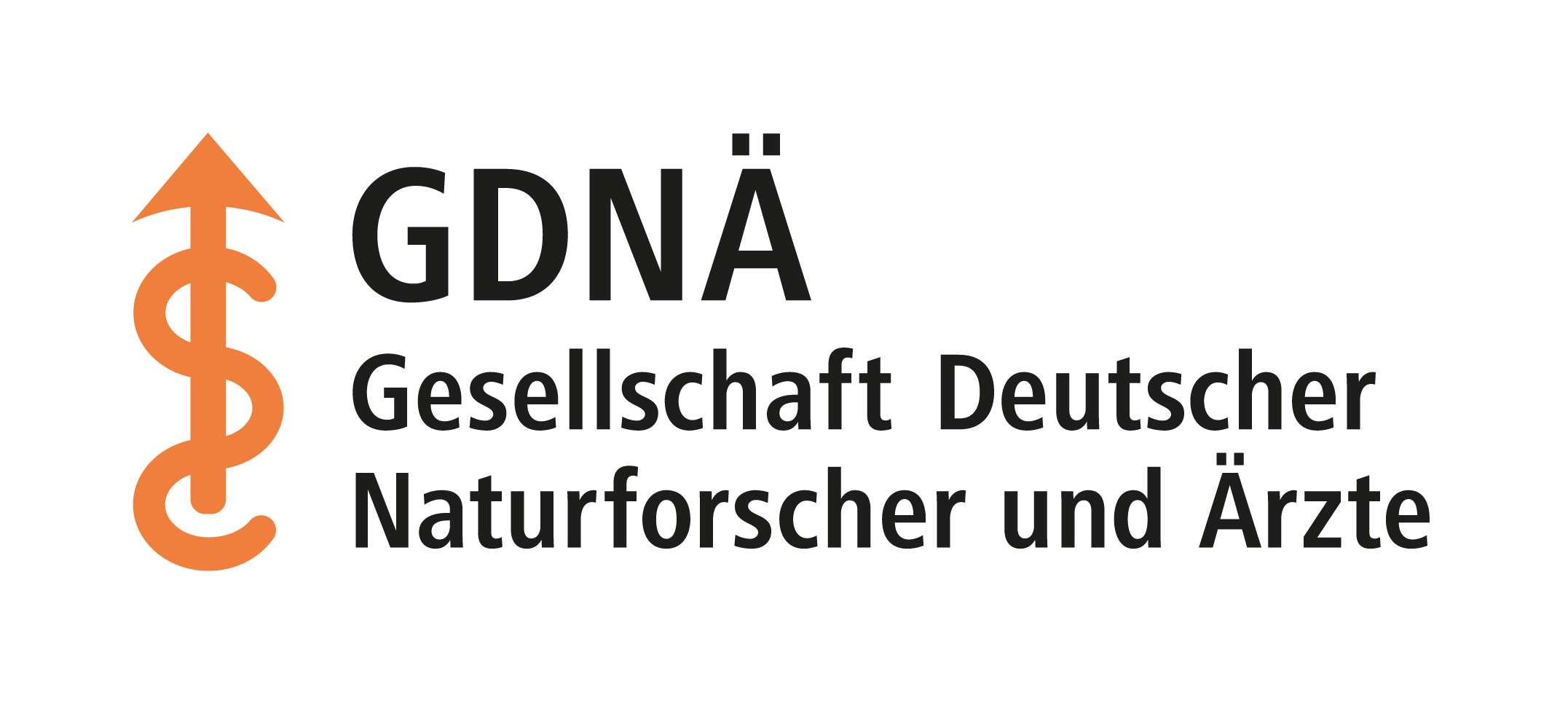Dr. Matthias Röschner: “We are digitizing on a grand scale”
“We are digitizing on a grand scale”
Dr. Matthias Röschner on the online future of the GDNÄ archive, important research questions and highlights of the collection.
Dr. Röschner, your first year as head of archives at the Deutsches Museum is up – how are you doing in your new position?
Since I had already been working in the archive since 2009, the transition to head of the archive has been fairly smooth. Of course, my main tasks have shifted and increased, but my predecessor Dr. Füßl prepared me wonderfully. So I am looking forward to continuing to shape the future of the archive together with a highly motivated team.
How can we imagine your job?
It is more varied than some might think. I am involved in all processes in the archive – from acquiring archival materials to organizing their indexing, from conservation measures and digitization to coordinating their use. In addition to research, public relations work is also very close to my heart: I give lectures, offer guided tours and write generally understandable articles in order to familiarize interested people with the archive work and our valuable archival records. I spend a lot of time answering scientific inquiries.
Can you explain this with an example?
For example, if a researcher from Berlin asks what sources we have on the professionalization of engineering at the end of the 19th century, I use my knowledge of the holdings to research the estate records of Rudolf Diesel, Oskar von Miller, Franz Reuleaux, Walther von Dyck and others, for example, and send her lists of relevant archival records. The researcher is thus well prepared for a successful visit to our reading room in Munich.
Quite a workload for a full-time position…
…there is still a lot to do. For example, the important committee work, for example within the framework of the Leibniz Association, the Bavarian Archive Day or in the Munich Archive Circle, and cross-sectional tasks such as personnel management and maintaining contacts with universities and institutes of the history of science. For the GDNÄ, I regularly comb through scholarly antiquarian bookshops and auction catalogs and follow up on promising leads in order to be able to add to what is missing.
With success?
Yes, absolutely. For example, we were able to acquire some original documents from the 19th century and the first half of the 20th century from the private collections of board members. But there are still large gaps, mainly due to the old archive that was confiscated by the Soviets towards the end of the Second World War and has since disappeared.

In autumnal light: the exhibition building on Munich’s Museum Island. © Deutsches Museum
Your predecessor, Dr. Füßl, repeatedly campaigned for the return of the collection. Will you do the same?
Yes, we will of course continue to keep an eye on it. But I don’t think we will reach our goal quickly. The Ukraine war further darkens the prospects.
What is the importance of the GDNÄ archive for your institution?
The GDNÄ is the oldest interdisciplinary scientific society in Germany and the mother of renowned professional societies in Germany and abroad – its archive is therefore of great national importance. In addition: Unlike other scientific institutions whose archives were completely destroyed during World War II, at least some historical pieces from the early days have been preserved by the GDNÄ.
What is particularly impressive?
For example, the nine-page print of a speech from 1828 in which Alexander von Humboldt promoted the establishment of sections and thus initiated the first major reform of the GDNÄ. Or the handwritten list of participants from the 1834 meeting in Stuttgart. Albert Einstein’s letter from 1913 is also very impressive. In it, the physicist asks to be allowed to give his lecture in a joint session for mathematics and physics, as he is going into “some formulas so that what I have to present is not too vag[e].”
On the Internet, you can still hardly find anything about the GDNÄ archive in the Deutsches Museum. Do you want to change that?
Yes, we are in the process of digitizing our holdings on a large scale. In the next few years, you will be able to find indexing data for all archival materials on the web, with information on title, scope and chronological classification. This will enable worldwide research on topics, persons, institutions and companies – and links to other estates and holdings that would be inconceivable in the analog world. We will also offer digital copies of the archival records online, provided there are no copyright objections. This applies, for example, to the assembly reports from 1822 to 1900, with which I would like to do a separate project of digitization followed by full text recognition.
That sounds exciting, but also like a lot of work. How big is your team?
There are eleven archivists working with me, who have plenty to do even without additional projects. However, we are actively supported by our in-house “Deutsches Museum Digital” initiative. It is in the process of making the museum’s scientific holdings and object collections publicly available via a central online portal. By 2025 at the latest, on the centenary of the opening of Munich’s Museum Island, the goal is to be able to search all available data and digitized material on the Internet.

Space for concentrated work: the reading room of the archive. © DMA CD 65461a
Do you still find time for your own research?
Less than before, but I am currently very interested in provenance research. That is, how and under what circumstances did objects and archival materials come to the Deutsches Museum? There is a cross-departmental working group in the museum that is investigating these research questions and which I coordinate together with a colleague from the area of object collections. The archive plays a key role in this, because this is where the museum’s historical administrative files are kept. A joint publication is also planned, in which I would like to contribute with the provenance of archive holdings.
What open research questions do you see when you think about the recent history of the GDNÄ?
There are quite a few, for example: How did the GDNÄ manage to gain a foothold in the Federal Republic after the war? What personal and thematic continuities are there between the Nazi and post-war periods? The topic of women and the GDNÄ has hardly been dealt with. I am convinced that the documents available to us would yield a great deal for such research.
Your institute will have an exhibition booth at the anniversary meeting in Leipzig. What can visitors expect?
We will be showing some of the highlights of the GDNÄ archive in a poster exhibition, including the medal for the centenary of the GDNÄ with a portrait of Lorenz Oken on the front and a city view of Leipzig on the back, and also the commemorative publication for the Leipzig meeting in 1922. Also on display will be artfully designed Art Nouveau publications from the early 20th century and the Einstein letter mentioned above. We are happy to be available for discussions and look forward to receiving tips on interesting new documents for the collection. You can find us in the Market of Sciences in the basement of the Leipzig Congress Hall, where several scientific institutes from Leipzig will also have booths.
What you tell us about your work does not fit at all with the ideas of dusty files and sleeve protectors that many lay people associate with your profession. What encouraged you as a young person to go in this direction?
Even during my history studies, I was fascinated by the – literally – unique archive sources. There is something very special about working with letters, notebooks, reports, and drawings that exist only once and that often only one person before me, the scribe, held in his or her hands. I found out in several internships that the profession is very future-oriented and involves a lot of responsibility. For only those records that the archivist evaluates as “worthy of archiving” and then actually takes into the archive will be available to future generations. As an archivist, I can not only discover the fascination of the original for myself, but also pass it on to others. In addition to my task of acquiring and preserving historical sources, I see myself above all as a mediator of information and a builder of bridges between history and the present.

Matthias Röschner. © Private
About the person
Dr. Matthias Röschner is head of the Archive Department of the Deutsches Museum in Munich. Previously, he was deputy to Dr. Wilhelm Füßl, who retired in 2021. Röschner comes from southern Hesse, studied Latin and history, and received his doctorate in 2001 with a study on hospital history. He then completed an archival clerkship and worked at the Ludwigsburg State Archives from 2004 to 2009. In his research, Matthias Röschner deals, for example, with the history of the Deutsches Museum, the provenance of archival holdings and colonial traces in the archives of the Leibniz Association. He is the responsible editor of “ARCHIV-info”, the archive journal of the Deutsches Museum.

In preparation for the 85th GDNÄ meeting in Vienna in 1913: handwritten letter from Albert Einstein, who was invited to speak. © DMA FA 016 vorl. Nr. 1042
Further information:

Title page of Alexander v. Humboldt’s famous speech to the Assembly of German Naturalists and Physicians in Berlin in 1828. © DMA CD 86986

Poster of the archive in the Deutsches Museum @ DMA CD 71578
